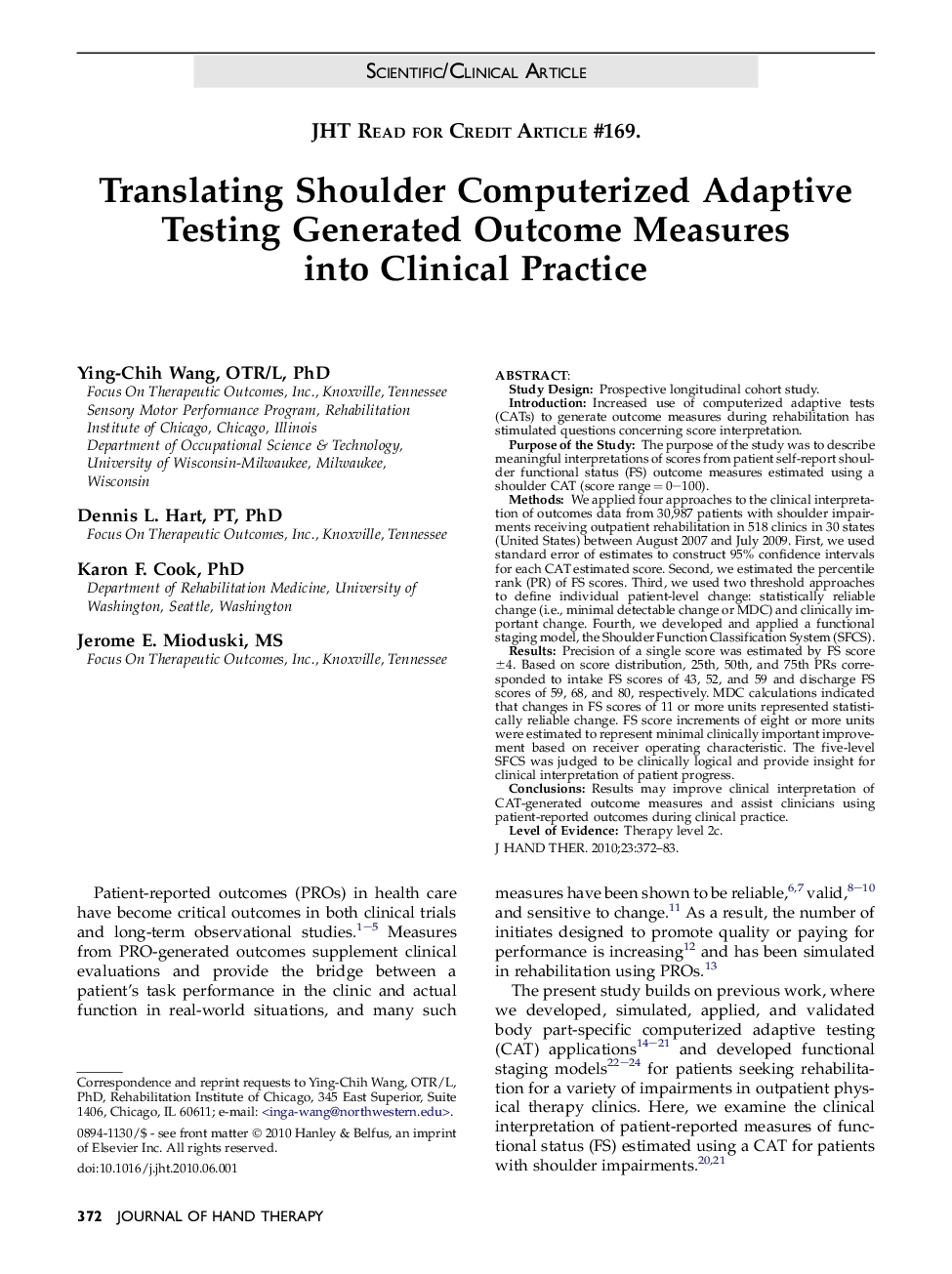| Article ID | Journal | Published Year | Pages | File Type |
|---|---|---|---|---|
| 2692178 | Journal of Hand Therapy | 2010 | 12 Pages |
Study DesignProspective longitudinal cohort study.IntroductionIncreased use of computerized adaptive tests (CATs) to generate outcome measures during rehabilitation has stimulated questions concerning score interpretation.Purpose of the StudyThe purpose of the study was to describe meaningful interpretations of scores from patient self-report shoulder functional status (FS) outcome measures estimated using a shoulder CAT (score range = 0–100).MethodsWe applied four approaches to the clinical interpretation of outcomes data from 30,987 patients with shoulder impairments receiving outpatient rehabilitation in 518 clinics in 30 states (United States) between August 2007 and July 2009. First, we used standard error of estimates to construct 95% confidence intervals for each CAT estimated score. Second, we estimated the percentile rank (PR) of FS scores. Third, we used two threshold approaches to define individual patient-level change: statistically reliable change (i.e., minimal detectable change or MDC) and clinically important change. Fourth, we developed and applied a functional staging model, the Shoulder Function Classification System (SFCS).ResultsPrecision of a single score was estimated by FS score ±4. Based on score distribution, 25th, 50th, and 75th PRs corresponded to intake FS scores of 43, 52, and 59 and discharge FS scores of 59, 68, and 80, respectively. MDC calculations indicated that changes in FS scores of 11 or more units represented statistically reliable change. FS score increments of eight or more units were estimated to represent minimal clinically important improvement based on receiver operating characteristic. The five-level SFCS was judged to be clinically logical and provide insight for clinical interpretation of patient progress.ConclusionsResults may improve clinical interpretation of CAT-generated outcome measures and assist clinicians using patient-reported outcomes during clinical practice.Level of EvidenceTherapy level 2c.
